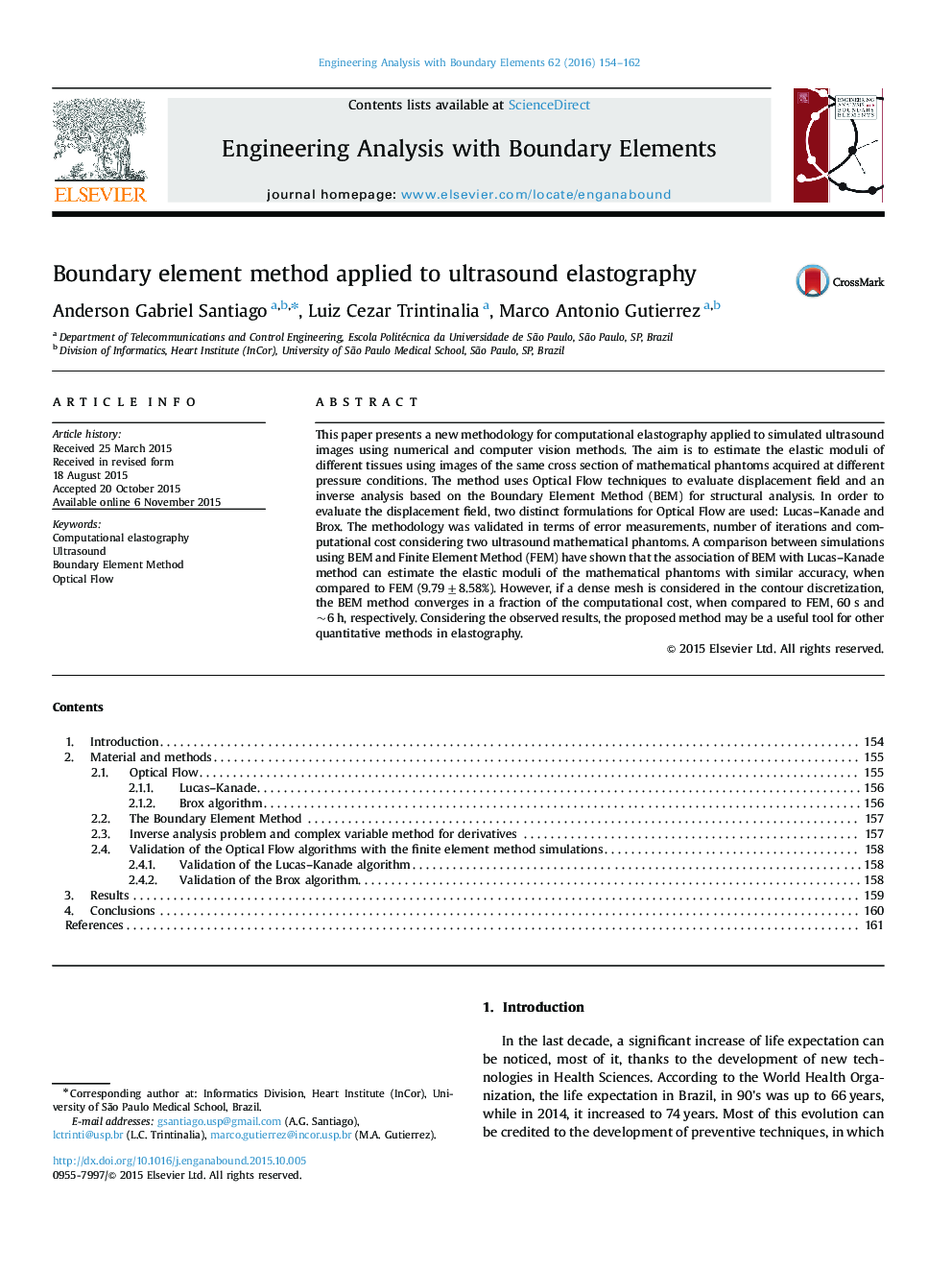| Article ID | Journal | Published Year | Pages | File Type |
|---|---|---|---|---|
| 512257 | Engineering Analysis with Boundary Elements | 2016 | 9 Pages |
This paper presents a new methodology for computational elastography applied to simulated ultrasound images using numerical and computer vision methods. The aim is to estimate the elastic moduli of different tissues using images of the same cross section of mathematical phantoms acquired at different pressure conditions. The method uses Optical Flow techniques to evaluate displacement field and an inverse analysis based on the Boundary Element Method (BEM) for structural analysis. In order to evaluate the displacement field, two distinct formulations for Optical Flow are used: Lucas–Kanade and Brox. The methodology was validated in terms of error measurements, number of iterations and computational cost considering two ultrasound mathematical phantoms. A comparison between simulations using BEM and Finite Element Method (FEM) have shown that the association of BEM with Lucas–Kanade method can estimate the elastic moduli of the mathematical phantoms with similar accuracy, when compared to FEM (9.79±8.58%). However, if a dense mesh is considered in the contour discretization, the BEM method converges in a fraction of the computational cost, when compared to FEM, 60 s and ~6 h, respectively. Considering the observed results, the proposed method may be a useful tool for other quantitative methods in elastography.
